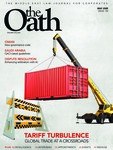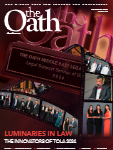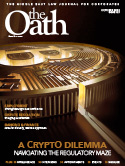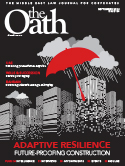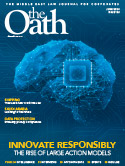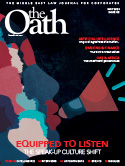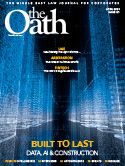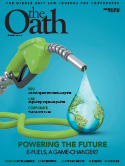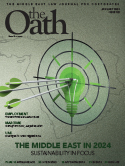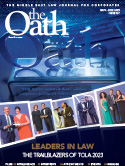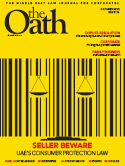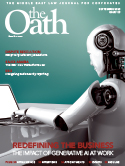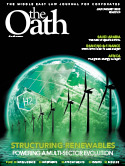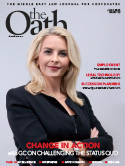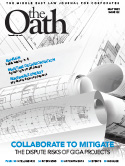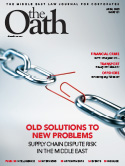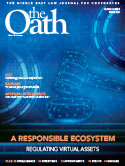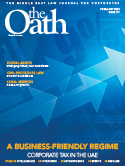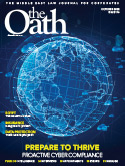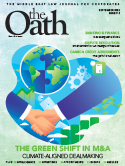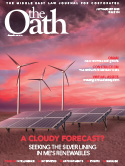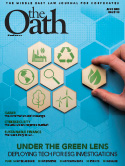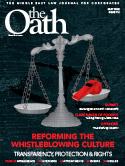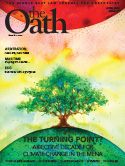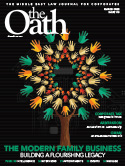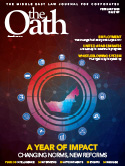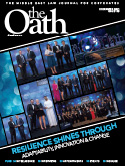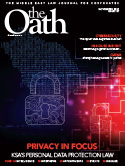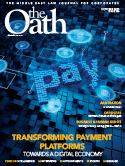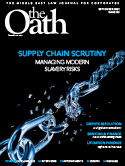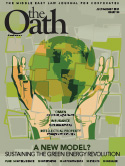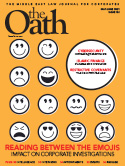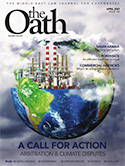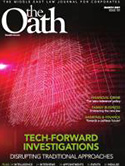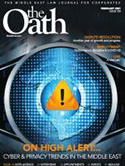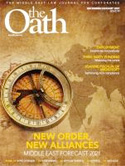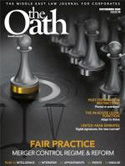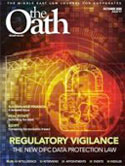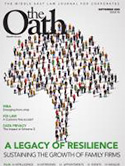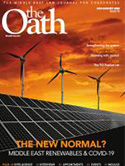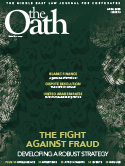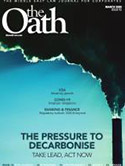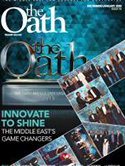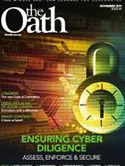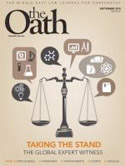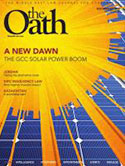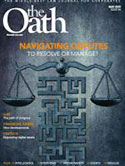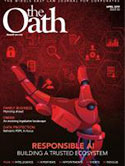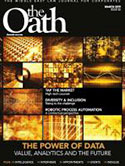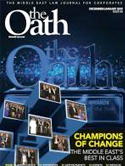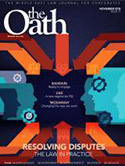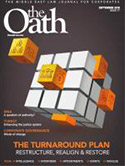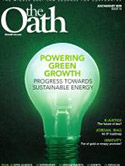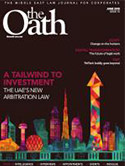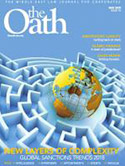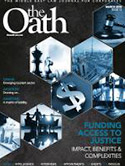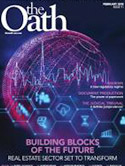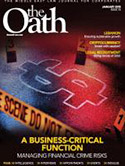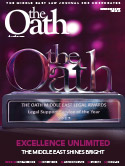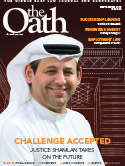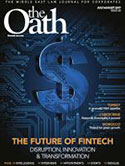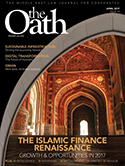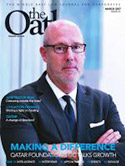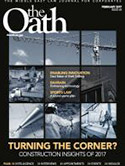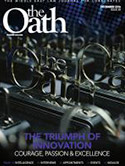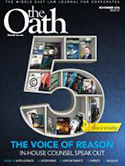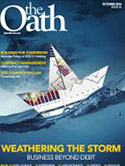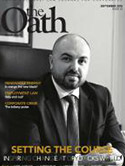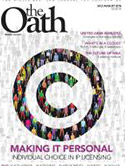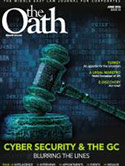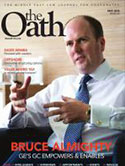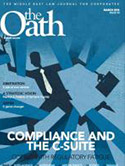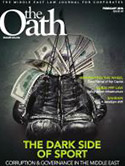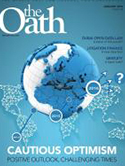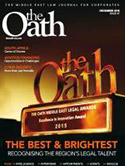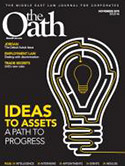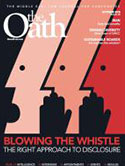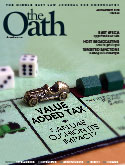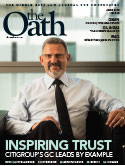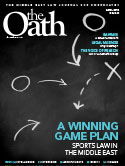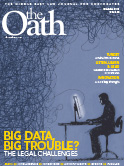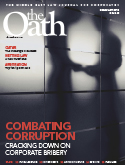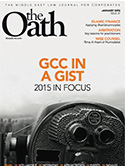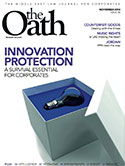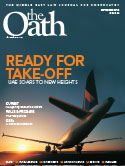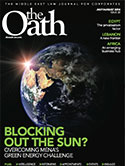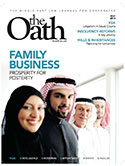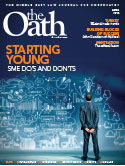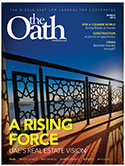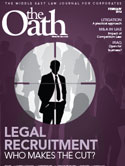Climate proofing construction
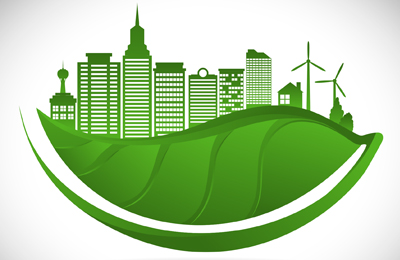
Chris Edwards, Alison Eslick, Lauren Banner of Reed Smith look back at the April 16th storm, its impact on UAE’s construction sector and list strategies to weather unprecedented climate conditions.
On April 16, 2024, the UAE experienced unprecedented weather with more than a year’s worth of rain falling within 24 hours. It was the worst storm in the UAE’s recorded history and caused significant disruption to business across the country, including the construction industry. The shock has inevitably provoked discussions around climate change and the need to mitigate adverse weather impacts in the future.
Experts suggest that the UAE’s climate is changing, with more tropical weather patterns expected. For example, precipitation is increasing in the Arabian Peninsula, and is predicted to increase by 30-40 per cent in the coming decades. It is also becoming warmer, particularly in urban areas with wide ranging temperature differences in cities compared to rural areas, ranging up to 15 degrees.
These factors likely contributed to the storms on April 16, 2024, and will result in more unstable and potentially damaging weather going forwards. Accordingly, there is a pressing need for the construction industry, including governments, developers, contractors, investors and regulators, to proactively deal with and mitigate this risk.
Future proofing the UAE Construction Industry
The UAE has grown exponentially since it was founded in 1971, from a population of around 350,000 persons to about 10 million persons in 2024. It is a remarkable success story. However, such unprecedented growth together with changing weather patterns comes with challenges. The recent storms revealed specific pressure points that need to be addressed. Specifically:
- – The UAE has a very high and extremely saline water table. Rainwater feeds the water table and as the water levels rise, we see an increase in pressure on the basement slab and water leaks. Projects going forwards will need to leave more room for the rising water table and ensure they are properly waterproofed.
- – Buildings in the UAE were not designed for heavy downpours. For example, most residential compounds have flat roofs, as opposed to pitched roofs. Construction methods for installing windows and doors have also not properly catered for water-tightness, perhaps on the basis that rain was so light and infrequent that it didn’t matter. The lack of drainage is also an issue.
- – Developments have been built in silos and there has been a lack of city-wide infrastructure planning. This is starting to be addressed. For example, Dubai announced in June 2024 a AED30 billion (USD8.2 billion) project to enhance the city’s storm water drainage by 700 per cent covering all areas of the Emirate.
Successful future proofing requires collaboration of all stakeholders across the construction industry. Rigorous tolerance assessments will be required for projects and a new approach to design and the selection of products/materials. Adapting materials and projects will not be cheap but are a smart investment when compared to the costs of rectifying severe damage after the event.
The impact on construction contracts
Standard developer/employer construction contracts in the Middle East do not typically deal with adverse weather events in detail. Historically, the UAE was a developer market and most risk in construction contracts was passed down to the contractor. Moreover, in light of relatively stable, dry weather conditions, there has not been a pressing need to consider adverse weather when contracting in the Middle East. Evidently this is now changing.
Accordingly, considering adverse weather provisions and the climate in future construction contracts will become an increasingly important issue for all stakeholders. A helpful starting point may be to look at standard contract suites, such as FIDIC.
Extensions of Time/Costs
The FIDIC Silver Book does not provide any relief for adverse weather, whereas the FIDIC Red and Yellow Books provide for extensions of time under Clause 8.5(c) where the delay is caused by “exceptionally adverse climatic conditions”. These are described under the contract as ‘unforeseeable’ having regard to climatic data made available by the employer and/or climatic data published in the country for the geographical location of the site.
None of the FIDIC Suite of Contracts provide for prolongation costs in the case of adverse weather events, although the Red and Yellow Books provide that the contractor shall not be liable for the costs of rectifying loss or damage in such circumstances. In particular, the Red and Yellow Books state that a contractor shall have no liability whatsoever for loss or damage caused by any “operation of the forces of nature…which is ‘unforeseeable’ or against which an experienced contractor could not reasonably have been expected to have taken adequate preventative precautions”.
The ‘foreseeability’ threshold in respect of weather events under the FIDIC suite is not a straightforward assessment. Historic weather patterns vary considerably, and extreme weather events are becoming increasingly common due to climate change. Moreover, with advances in weather detection and communication, it is arguable that we now understand more about the timing and extent of severe weather events earlier and in more detail than ever before.
Accordingly, it is not clear that a severe weather event in the UAE, even of the same magnitude as the April 16th storm, would be considered as ‘unforeseeable’. A potential way forward could be to consider including specific thresholds in contracts relating to, for example, precipitation and duration. We have seen similar thresholds in offshore contracts relating to swell size and wind speeds. This would give both parties some certainty.
Force Majeure
Force Majeure provisions in construction contracts vary considerably in the region and tend to be quite bespoke.
The FIDIC suite refers to ‘exceptional events’ rather than ‘force majeure’. These are defined as an event or circumstance which is (i) beyond a party’s control; (ii) could not reasonably have been provided against before entering the contract; (iii) could not have been avoided or overcome; and (iv) was not attributable to the other party.
A non-exhaustive list of examples is provided for in the FIDIC suite which includes, amongst others, “natural catastrophes such as earthquake, tsunami, volcanic activity, hurricane or typhoon”. However, there is no express reference to storms or flooding which may lead to some uncertainty.
We may start to see a shift in how force majeure/exceptional events are defined in contracts including but not limited to, express references to adverse weather and its consequences, including severe flooding.
Contractor Obligations
Construction contracts typically provide for an ‘advance’ or ‘early’ warning mechanism in respect of known or probable future events or circumstances which may adversely affect or delay the works. Under the FIDIC suite this is a mutual obligation but this is often amended to apply only to the contractor. These provisions allow for the parties to plan and implement measures to avoid or mitigate events such as adverse weather.
Contracts may also include express obligations on a contractor to mitigate or avoid any delays to the progress of the works and/or any additional costs being incurred and that a failure to do so may reduce or extinguish any entitlement that the contractor might otherwise have had.
Such provisions are generic but may apply to adverse weather events. We may see the introduction of standalone ‘adverse weather’ or ‘adverse climate’ provisions with notice periods linked to forecasting and mitigation obligations such as rescheduling tasks, securing loose materials, protecting and bracing unfinished work and ensuring adequate drainage systems are in place, expressly set out in the contract.
Sustainability
It is estimated that the built environment and construction sector accounts for approximately 40 per cent of greenhouse gas emissions. However, market standard construction contracts, including FIDIC, generally fail to address the environment and sustainability sufficiently within their contract terms. Governments, developers and contractors alike will have to find ways to align their contracts with their long-term net-zero strategies and other environmental objectives.
A helpful starting place are organisations such as the Chancery Lane Project, an international initiative that provides guidance and model contractual clauses related to climate change solutions. For example, the Chancery Lane Project provides model clauses relating to a climate related standard of care, carbon budgets, measuring, reporting and offsetting emissions and sustainable on-site working practices (amongst others). These can be adapted and included in contracts to help tackle the issues with adverse weather at its source.
Looking ahead
To mitigate the consequences of adverse weather and climate change, the industry will need to adopt a ‘cost versus benefit’ analysis by investing heavily in future proofing infrastructure and projects. Stakeholders will inevitably need to adapt budgets and prioritise durability. The challenge will be to ensure the measures will not render projects unaffordable. However, this should save costs in the longer term.
Parties will also need to adapt their construction contracts to ensure that the risks of adverse weather events are appropriately dealt with and to proactively address concerns relating to the environment, climate change and sustainability. This should not require a radical overhaul of contracts, but a shift in priorities when negotiating and executing these contracts.
Text by:

Chris Edwards, counsel, Reed Smith
Alison Eslick, senior associate, Reed Smith
Lauren Banner, associate, Reed Smith







